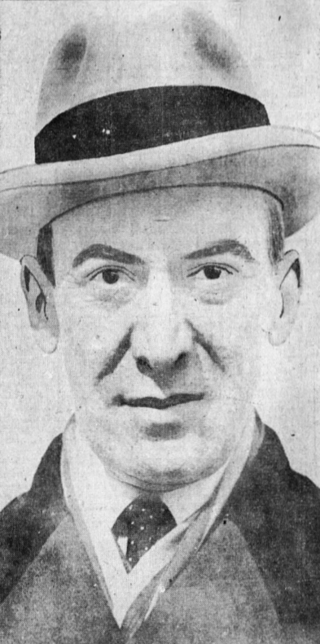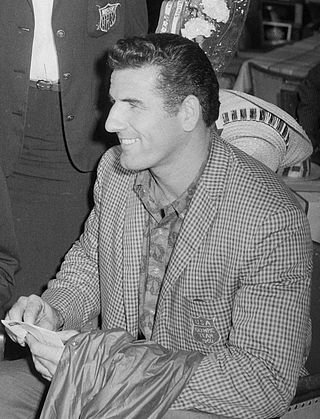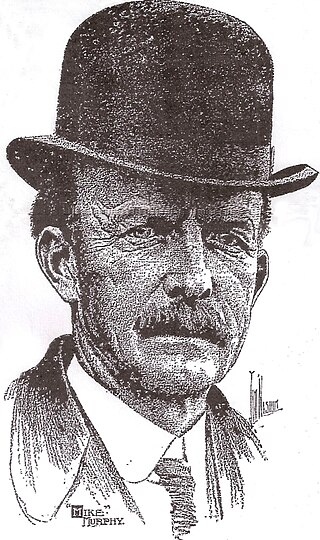Related Research Articles

Alvin Christian "Al" Kraenzlein was an American track-and-field athlete known as "the father of the modern hurdling technique". He was the first sportsman in the history of the Olympic games to win four individual gold medals in a single discipline at the 1900 Summer Olympics in Paris. As of 2016, Alvin Kraenzlein is the only track-and-field athlete who has won four individual titles at one Olympics. Kraenzlein is also known for developing a pioneering technique of straight-leg hurdling, which allowed him to set two world hurdle records. He is an Olympic Hall of Fame (1984) and National Track and Field Hall of Fame (1974) inductee.

George Washington F. Orton was a Canadian middle and long-distance runner. In 1900, he became the first Canadian to win a medal at an Olympic Games. He won a bronze in the 400 metre hurdles, and then, forty-five minutes later, won the gold medal in the 2500 metre steeplechase. He was the first athlete with a disability to win an Olympic gold medal. At the University of Pennsylvania, for whom he competed while earning his Masters and Doctorate and completed his ability to speak 9 languages, he was captain of Penn's track and field team in 1896 and was a founder and captain of its ice hockey team in 1896–1897, and was known as "The Father of Philadelphia Hockey". He won seventeen U.S. National Track and Field titles.

Franklin Field is a sports stadium in Philadelphia, Pennsylvania, at the eastern edge of the University of Pennsylvania's campus. Named after Penn's founder, Benjamin Franklin, it is the home stadium for the Penn Relays, and the university's venue for football, track and field, and lacrosse. Franklin is also used by Penn students for recreation, intramural and club sports, including touch football and cricket; it is also the site of Penn's commencement exercises, weather permitting.
Lee Quincy Calhoun was an American athlete, a double winner of 110 m hurdles at the Olympic Games.
Melvin Pender Jr. competed as a runner in the 1964 and 1968 Olympics, winning an Olympic gold medalist in the 4x100 m relay at the 1968 Summer Olympics. He had been a member of the Philadelphia Pioneer Track Club where he was coached by Alex Woodley, who had coached several other athletes who went on to participate in Olympic events.

Herman Ronald "Herm" Frazier is a retired American sprinter. He won gold medals in the 4 × 400 m relay at the 1976 Olympics and 1975 and 1979 Pan American Games. Individually he earned a bronze medal in the 400 m event at the 1976 Olympics. He served as chef de mission of the 2004 U.S. Olympic team and as the Athletic Director at the University of Alabama at Birmingham and the University of Hawaii. He currently serves as the senior deputy athletics director at Syracuse University.

Renaldo Nehemiah is a retired American track and field athlete who specialized in the 110 m hurdles. He was ranked number one in the world for four straight years, and is a former world record holder. Nehemiah is the first man to run the event in under 13 seconds. Nehemiah also played pro football in the National Football League (NFL) as a wide receiver for the San Francisco 49ers from 1982 to 1985, before returning to track and field athletics from 1986 to 1991. After retiring from competition, he has worked in sports management.

John Carlyle Garrels was an American athlete who excelled in the 110 metres hurdles, discus throw, shot put, and as a fullback and end in American football.
Alexander Timothy McKee is an American former competition swimmer and three-time Olympic silver medalist. He was a successful medley and backstroke swimmer, and is often remembered for being a part of the closest Olympic swimming finish in history and the resulting rule changes regarding the timing of international swimming events.

Lawson "Robbie" N. Robertson was considered one of the more accomplished American track coaches of the first half of the twentieth century. From 1904-1936, he was with the American team at every Olympics with the exception of 1916 when the Olympics were cancelled due to WWI. He coached Track and Field for the Irish-American Athletic Club in Queens, New York from 1909–16, and then for the University of Pennsylvania from 1916-47. He was U.S. Olympic Assistant Track coach in 1912 and 1920 and was head coach for the American Track and Field Team in four Olympics from 1924-36.

Thomas Truxtun Hare was an American Olympic medalist who competed in track and field and the hammer throw. He also played football with the University of Pennsylvania and was selected first-team All-American all four years. Sports Illustrated wrote, "Few early 20th Century players were as revered as Hare, who played every minute of every game." He was selected as a charter member of the College Football Hall of Fame in 1951.

Donald George Bragg was an American athlete who competed mainly in the pole vault and won a gold medal in that event at the 1960 Summer Olympics.

Joshua Culbreath was an American athlete who competed mainly in the 400 meter hurdles—the national outdoor champion from 1953 to 1955; three-time winner of the event in the Penn Relays in the same years, and Olympic bronze medal winner in 1956, while he was serving in the U.S. Marine Corps; and world record holder in 1957. Culbreath was inducted into the United States Marine Corps Sports Hall of Fame in 2008.

Michael Charles Murphy was an American athletic trainer and coach at Yale University, Detroit Athletic Club (1889–1892), University of Michigan (1891), Villanova University (1894), University of Pennsylvania, and the New York Athletic Club (1890–1900). He coached the American track athletes at the Summer Olympics in 1900, 1908, and 1912. He spent a year in approximately 1884 as the trainer of heavyweight boxing champion John L. Sullivan.

John Kenneth Doherty was an American decathlon champion, college track and field coach, author and longtime director of the Penn Relays. While a student at the University of Michigan, Doherty won the American decathlon championship in 1928 and 1929 and won the bronze medal in the event at the 1928 Summer Olympics in Amsterdam. He later served as a track coach at Princeton University (1929–1930), the University of Michigan (1930–1948), and the University of Pennsylvania (1948–1957). He was also the meet director for the Penn Relays from 1956 to 1969 and of the first dual track meet between the United States and the Soviet Union in 1959. He was also a published author of works on track coaching, and his Track & Field Omnibook was regarded as "the track coach's bible" from the 1970s through the 1990s. Doherty has been inducted into at least six athletic halls of fame, including the National Track and Field Hall of Fame and athletic halls of fame at the University of Pennsylvania, University of Michigan, and Wayne State University.

The College Boat Club of the University of Pennsylvania is the rowing program for University of Pennsylvania Rowing, which is located in the Burk-Bergman Boathouse at #11 Boathouse Row on the historic Boathouse Row of Philadelphia, Pennsylvania. Its membership consists entirely of past and present rowers of the University of Pennsylvania.

George Almond Munger was an American athlete, coach and athletic director. He played college football and competed in track and field at the University of Pennsylvania from 1930 to 1933. He returned to Penn as head coach of the football team from 1938 to 1953 and as director of physical education from 1954 to 1974. His 1945 and 1947 teams finished ranked among the top ten college football teams in the United States, and he coached five players who were inducted into the College Football Hall of Fame and three who received the Maxwell Award as the best player in college football. Munger was inducted in the College Football Hall of Fame as a coach in 1976. The Maxwell Football Club has present the George Munger Award each year since 1989 to the national college football coach of the year.
Kevin Leonardo Newsome, Jr. is a former American college football quarterback from Portsmouth, Virginia who played for the Penn State Nittany Lions football team from 2009 to 2011, and for the Temple Owls football team in 2012.
The 1947 Penn Quakers football team was an American football team that represented the University of Pennsylvania during the 1947 college football season. In its tenth season under head coach George Munger, the team compiled a 7–0–1 record, outscored opponents by a total of 219 to 35, and was ranked No. 7 in the final AP Poll. The team's lone setback was a 7–7 tie with Army.
The 1941 Penn Quakers football team was an American football team that represented the University of Pennsylvania in the Ivy League during the 1941 college football season. In its fourth season under head coach George Munger, the team compiled a 7–1 record, won the Ivy League championship, outscored opponents by a total of 180 to 55, and was ranked No. 15 in the final AP Poll. The team's lone setback was a 13–6 loss to Navy.
References
- ↑ Evans, Hilary; Gjerde, Arild; Heijmans, Jeroen; Mallon, Bill; et al. "Jeff Kirk Olympic Results". Olympics at Sports-Reference.com. Sports Reference LLC. Archived from the original on April 18, 2020. Retrieved October 3, 2017.
- ↑ Jeff Kirk, Former Penn Track Star, Philadelphia Inquirer, February 26, 1976
- ↑ Jeff Kirk, Former Penn Track Star, Philadelphia Inquirer, February 26, 1976
